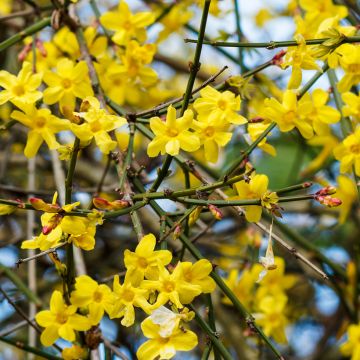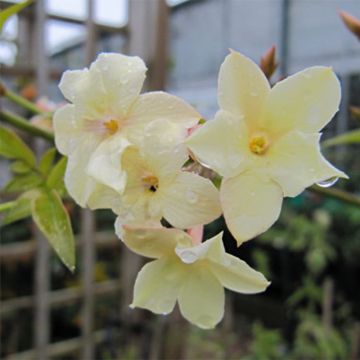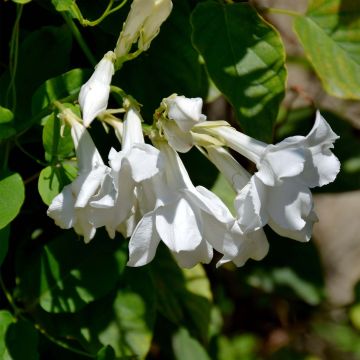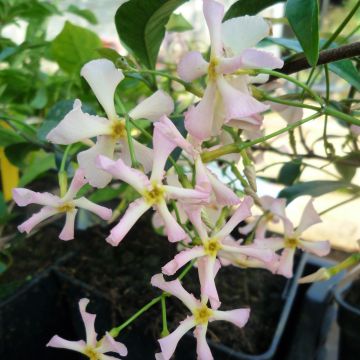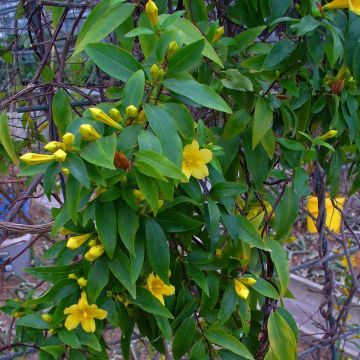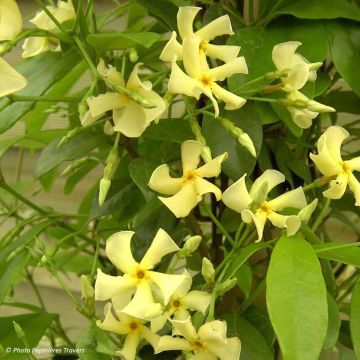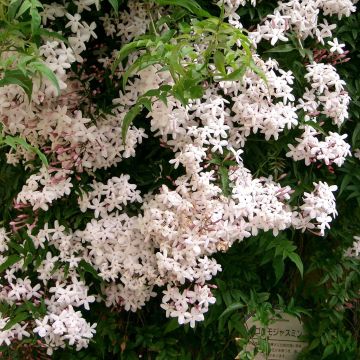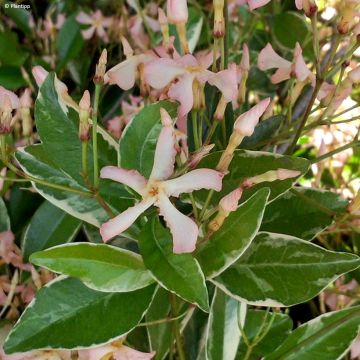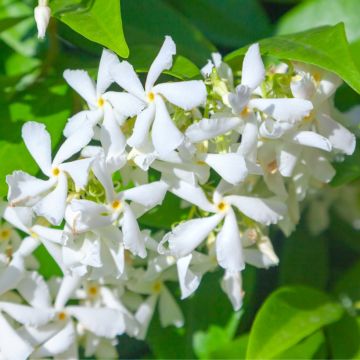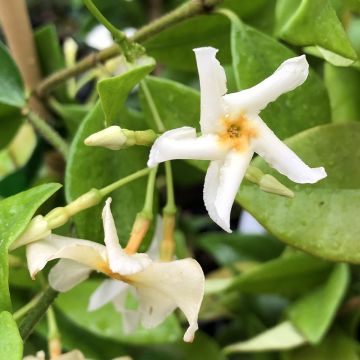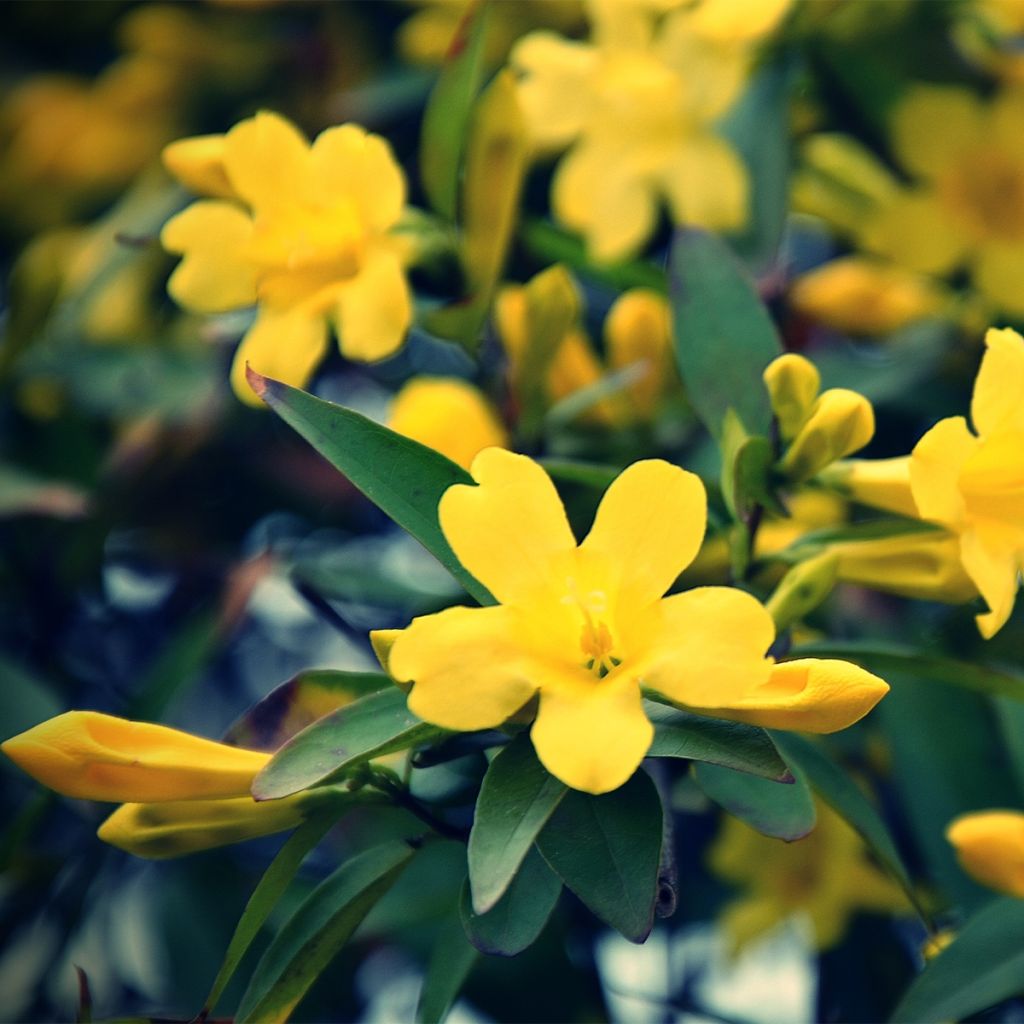

Jasminum humile Revolutum - Italian Jasmine
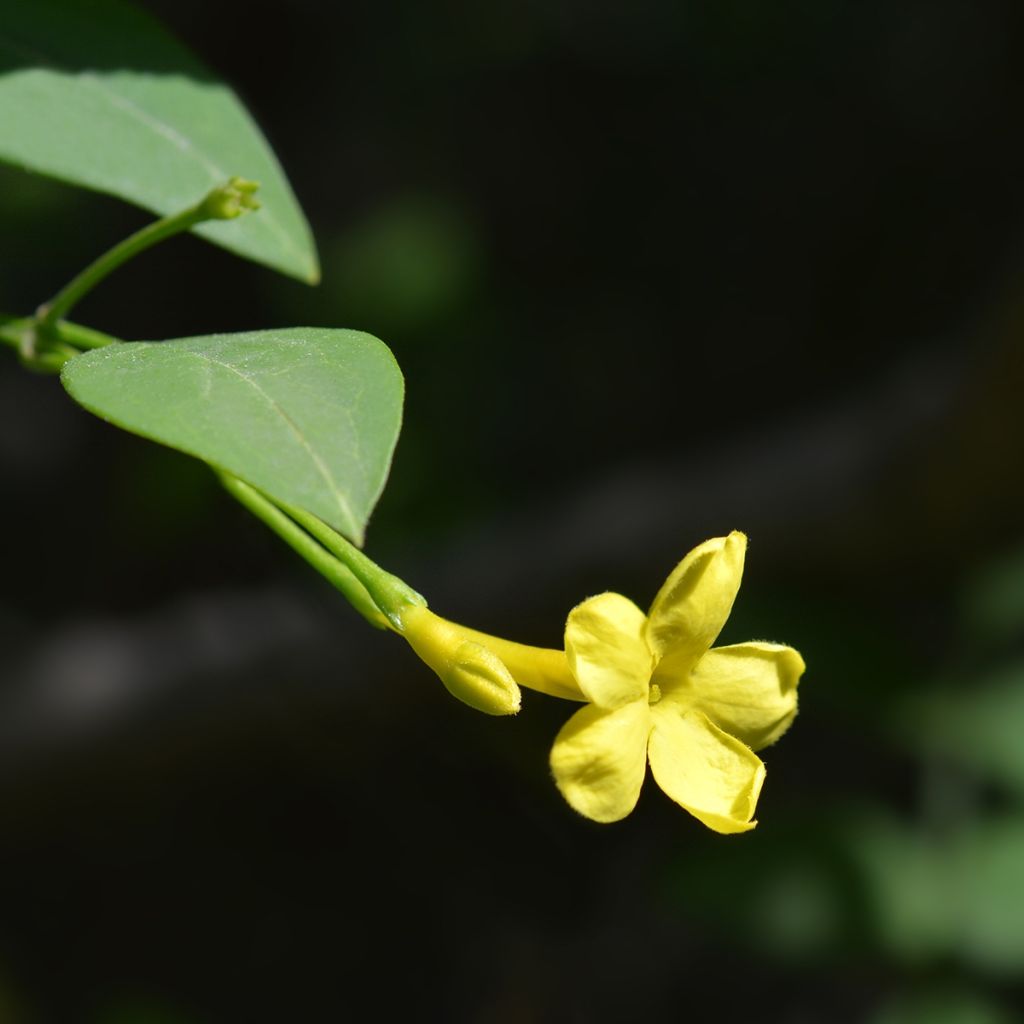

Jasminum humile Revolutum - Italian Jasmine
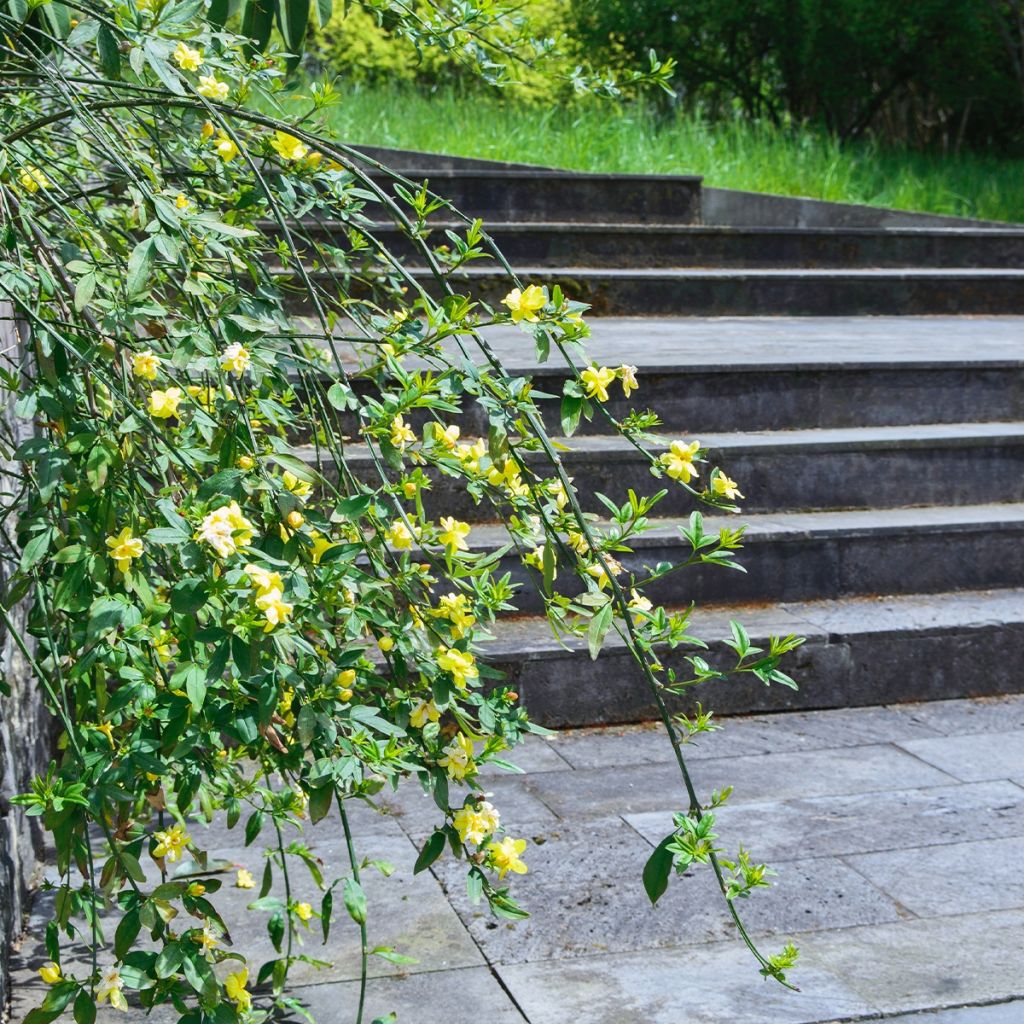

Jasminum humile Revolutum - Italian Jasmine
Jasminum humile Revolutum - Italian Jasmine
Jasminum humile Revolutum
Italian Jasmine, Italian Yellow Jasmine
This item cannot be shipped to the selected country
Delivery charge from €5.90
More information
Delivery charge from €5.90
More information
Schedule delivery date,
and select date in basket
This plant carries a 6 months recovery warranty
More information
We guarantee the quality of our plants for a full growing cycle, and will replace at our expense any plant that fails to recover under normal climatic and planting conditions.
From €5.90 for pickup delivery and €6.90 for home delivery
Express home delivery from €8.90.
Does this plant fit my garden?
Set up your Plantfit profile →
Description
Jasminum humile Revolutum is a variety of Jasmine that is moderately hardy with semi-evergreen foliage, depending on the severity of the winter. In early summer, it produces beautiful flowers of a very bright yellow, which stands out well against the bright green foliage. A bush with a tendency to climb, it can be planted either as a standalone plant or as a hedge, where it will have a trailing habit, or against a wall where it can climb up to 2 or 3 metres (7 or 10 feet) in height. Adapting to most soils, especially limestone soils, as long as they are well-drained, it is a plant that deserves to be better known.
Jasminum humile is a plant from the Oleaceae family, which includes many ornamental genera, some very common, such as Privets, Forsythias, Lilacs, or Ash trees, and others less common, such as Abeliophyllum, Chionanthus, or Osmanthus. It is also the family of the Olive tree, Olea in Latin, which gave it its name. Despite its common name of Italian Jasmine, this bush is native to Afghanistan, the Himalayas, southwestern China, and Myanmar. Jasminum humile (synonym Jasminum reevesii) was described as a species by the famous botanist Carl von Linnaeus in 1753.
The 'Revolutum' variety stands out from the species by its larger flowers, forming small trumpets that can reach 3cm (1in) in diameter. They appear in clusters of 6 to 12 flowers in June (or May depending on the climate), lasting until July, with some possible reblooming later. literature credits them with a fragrance, but it must be very subtle or perhaps depend on the encountered clones. So, focus more on the visual aspect of its beautiful flowers, a very bright yellow, which stand out well against the beautiful bright green foliage.
This bush has a climbing habit, it can stand upright on its own, with the ends of the branches hanging down due to their flexibility. If you plant it at the base of a wall, this support will allow the branches to climb up to 2.5 or 3 metres (8 or 10 feet) in height, with a width of 2 metres (7 feet). It tolerates pruning very well (to be done just after flowering), so it is easy to keep it at a height of 2 metres (7 feet) if you plant it against a property boundary fence.
Being moderately hardy, this Jasmine can withstand temperatures around -12°C (10.4°F), or even -15°C (5°F), as long as it is planted in well-drained soil, as excess water can enhance the freezing effect. A dry stone wall will therefore provide both mechanical support and an additional temperature boost. Its main advantage is its adaptability to all types of soil, whether acidic, neutral, or alkaline, it thrives in any of them! It will appreciate some watering in summer, but once well-established, it proves to be very resistant. In mild climates, it will retain its foliage in winter, while in other areas, colder temperatures will cause it to drop. That is why, although it tolerates partial shade, it is preferable to plant it in full sun.
Being sufficiently hardy in much of Europe, this less common Jasmine deserves to be more widely planted as it is a truly easy-to-grow bush. To conceal an unsightly wall, it pairs well with a Lonicera tatarica, the Tartarian Honeysuckle with its white-pink flowers and attractive decorative fruits. It will also fit well in a mixed hedge with its wild appearance, alongside Rosa chinensis Mutabilis, a rose with a long reblooming period and changing colours adapted to the same climatic conditions. Rhamnus alaternus can also be a good companion to form a rustic hedge even in dry climates. For a surprising effect, let a Clematis with purple flowers climb in this Jasmine, such as Shin-Shigyoku with its beautiful double flowers, which will create a strong contrast with the vibrant yellow of the 'Revolutum' Jasmine.
Jasminum humile Revolutum - Italian Jasmine in pictures
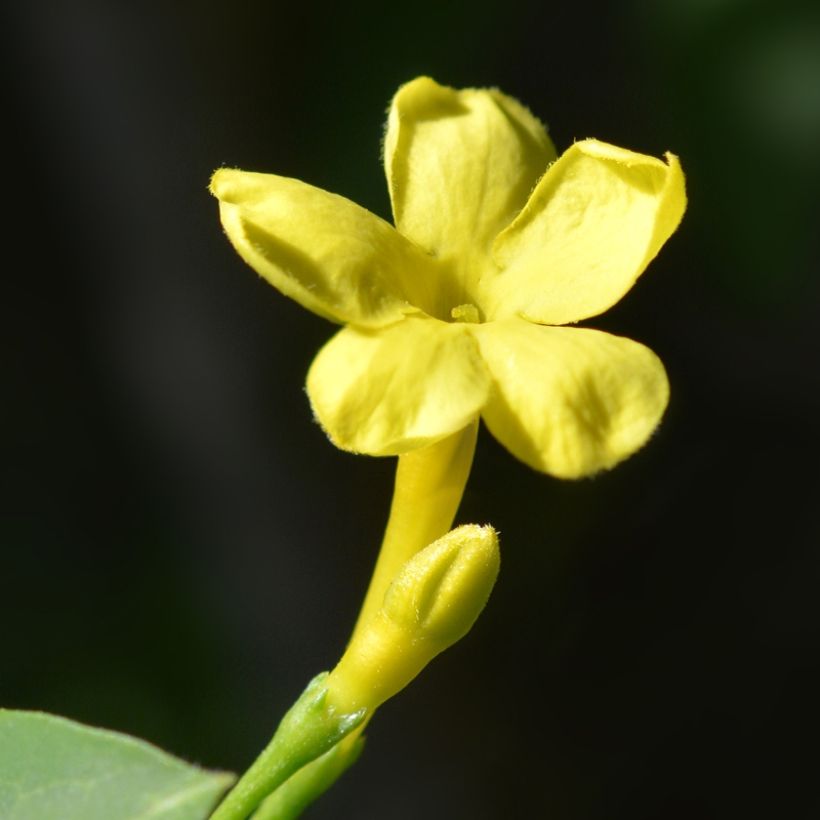

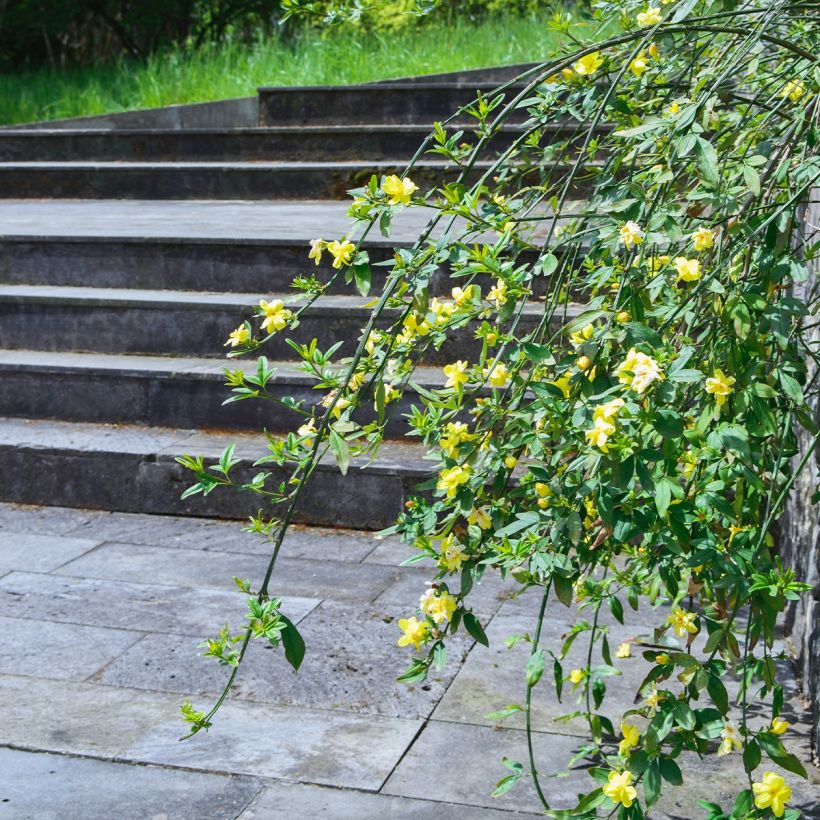

Plant habit
Flowering
Foliage
Botanical data
Jasminum
humile
Revolutum
Oleaceae
Italian Jasmine, Italian Yellow Jasmine
Cultivar or hybrid
Other Jasmine
Planting and care
Jasminum Revolutum adapts to most types of soil and particularly tolerates limestone well. Its main requirement concerns soil drainage, as it does not like excess moisture. Choose a sunny location for it, or possibly partial shade in a hot climate. In cooler climates, a south-facing stone wall will provide both support for it to climb and some warmth. Dig a hole 50cm (20in) wide and deep, and if your soil is a bit heavy, incorporate gravel at the bottom to create a drainage layer. In sandy soil, you can mix planting compost with the existing soil to improve water retention. Soak the root ball in a bucket for fifteen minutes, then position it in the planting hole so that the top of the root ball is level with the surrounding soil. Fill in and water generously. Water regularly during the first year, and make a few additional waterings in the summer.
Planting period
Intended location
Care
-
, onOrder confirmed
Reply from on Promesse de fleurs
Haven't found what you were looking for?
Hardiness is the lowest winter temperature a plant can endure without suffering serious damage or even dying. However, hardiness is affected by location (a sheltered area, such as a patio), protection (winter cover) and soil type (hardiness is improved by well-drained soil).

Photo Sharing Terms & Conditions
In order to encourage gardeners to interact and share their experiences, Promesse de fleurs offers various media enabling content to be uploaded onto its Site - in particular via the ‘Photo sharing’ module.
The User agrees to refrain from:
- Posting any content that is illegal, prejudicial, insulting, racist, inciteful to hatred, revisionist, contrary to public decency, that infringes on privacy or on the privacy rights of third parties, in particular the publicity rights of persons and goods, intellectual property rights, or the right to privacy.
- Submitting content on behalf of a third party;
- Impersonate the identity of a third party and/or publish any personal information about a third party;
In general, the User undertakes to refrain from any unethical behaviour.
All Content (in particular text, comments, files, images, photos, videos, creative works, etc.), which may be subject to property or intellectual property rights, image or other private rights, shall remain the property of the User, subject to the limited rights granted by the terms of the licence granted by Promesse de fleurs as stated below. Users are at liberty to publish or not to publish such Content on the Site, notably via the ‘Photo Sharing’ facility, and accept that this Content shall be made public and freely accessible, notably on the Internet.
Users further acknowledge, undertake to have ,and guarantee that they hold all necessary rights and permissions to publish such material on the Site, in particular with regard to the legislation in force pertaining to any privacy, property, intellectual property, image, or contractual rights, or rights of any other nature. By publishing such Content on the Site, Users acknowledge accepting full liability as publishers of the Content within the meaning of the law, and grant Promesse de fleurs, free of charge, an inclusive, worldwide licence for the said Content for the entire duration of its publication, including all reproduction, representation, up/downloading, displaying, performing, transmission, and storage rights.
Users also grant permission for their name to be linked to the Content and accept that this link may not always be made available.
By engaging in posting material, Users consent to their Content becoming automatically accessible on the Internet, in particular on other sites and/or blogs and/or web pages of the Promesse de fleurs site, including in particular social pages and the Promesse de fleurs catalogue.
Users may secure the removal of entrusted content free of charge by issuing a simple request via our contact form.

































